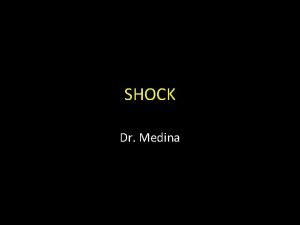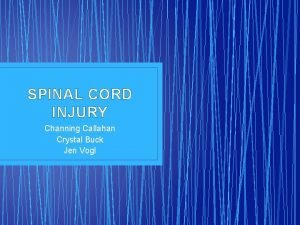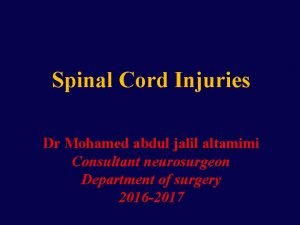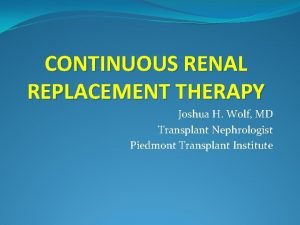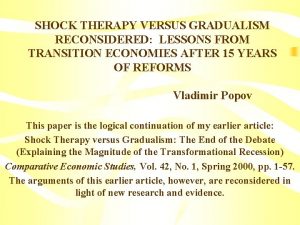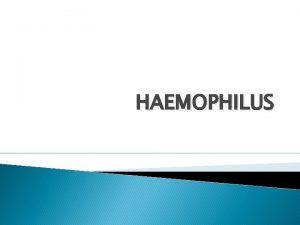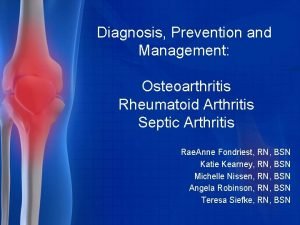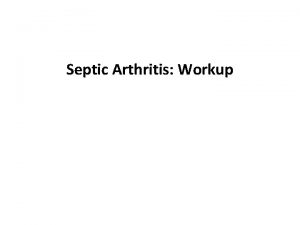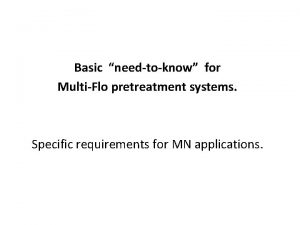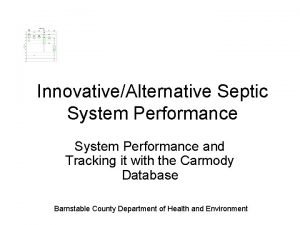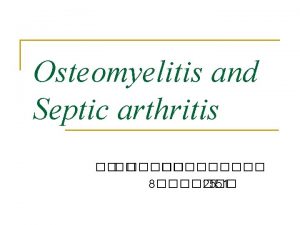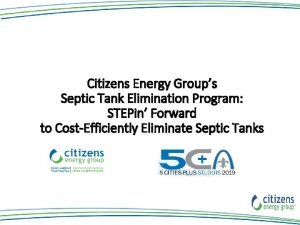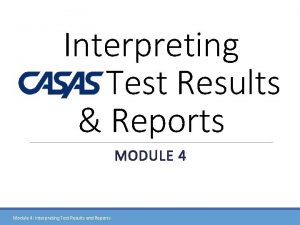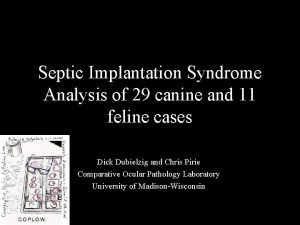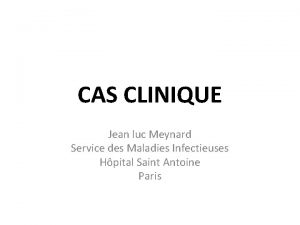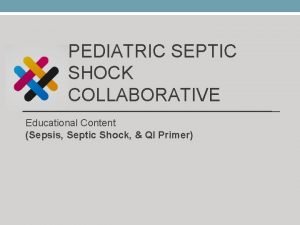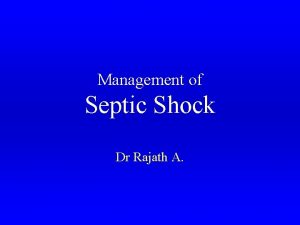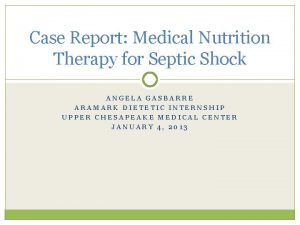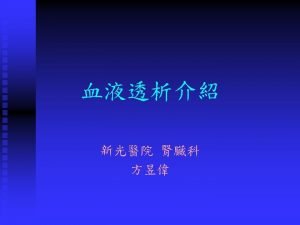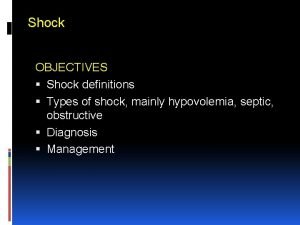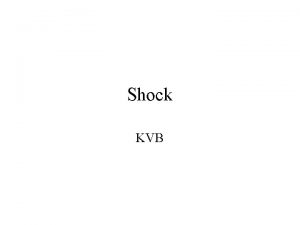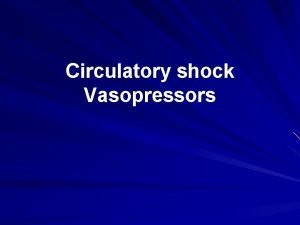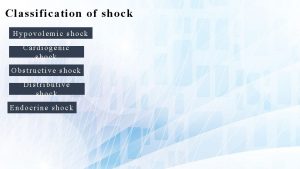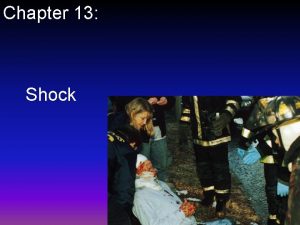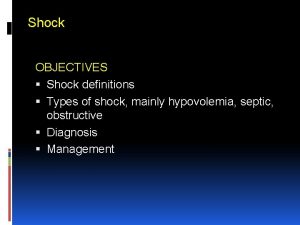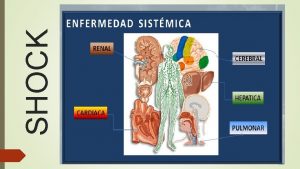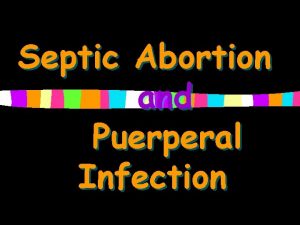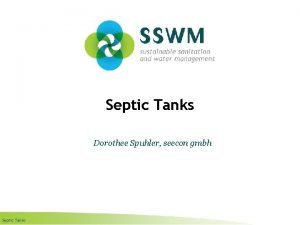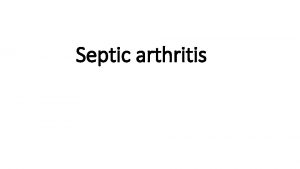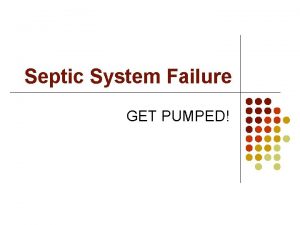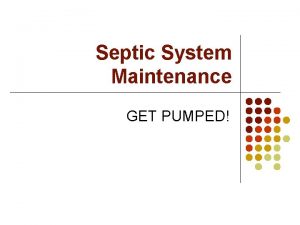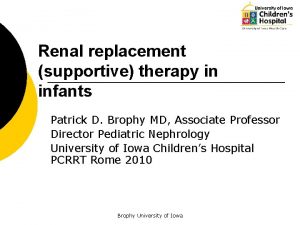Renal supportive therapy in septic shock Any evidence






























- Slides: 30

Renal supportive therapy in septic shock Any evidence for preemptive or supportive use of PCRRT/CVVH before established renal failure ? Joachim E. Fischer, MD MSc University Children’s Hospital & Center for Integrative Human Physiology University of Zurich Eidgenössische Technische Hochschule Zürich Swiss Federal Institute of Technology Zurich 1 / 30

Overview • • • Rationale & Epidemiology Clinical evidence Other examples of technological advances A word of caution Consideration for future studies 2 / 30

The history of CRRT 1977 1986 Kramer et al: CAVH Ronco et al: case series of four neonates 1990 s Advances in machinery 40% of ICUs use CRRT 30% peritoneal dialysis 20% conventional hemodialysis 2000 s Most PICU have CRRT available Indications: severe oliguria or anuria metabolic acidosis, ph < 7. 1 hyperkalemia, > 6. 5 mmol/l azotemia, urea > 30 mmol/l 3 / 30

Sepsis, adult patients • • • US: 700‘ 000 cases per year US: 210‘ 000 deaths per year US: Mortality > myocardial infarction Renal failure + sepsis: mortality 70% Renal failur alone: mortality 45% • Lower mortality in pediatric patients 4 / 30

Pathophysiology I • Untreated sepsis rapidly progresses from • sepsis to severe sepsis, septic shock and multiple organ failure. Sepsis is the organisms response which increases the chance of bacteria elimination at the risk of loosing control of the balance between inflammatory and anti -inflammatory responses 5 / 30

Sepsis cascade • Vasodilatation • Distributive shock N Engl J Med 2004; 351: 159 -69 6 / 30

Treatment NEJM 2001: 345: 1368 -77 7 / 30

Evidence for fluid overload in sepsis 8 / 30

Renal failure N Engl J Med 2004; 351: 159 -69 9 / 30

Renal failure II • Supportive Interventions may prevent acute renal failure N Engl J Med 2004; 351: 159 -69 10 / 30

Any help from CRRT? • Therapeutic efficacy in renal failure? • What is the best method? 11 / 30

Replacement in adult sepsis with renal failure N Engl J Med 2002; 347: 895 -902 12 / 30

Rationale for CRRT in non-renal failure • Evolution did not plan for antibiotics, fluid • • resuscitation and ventilators With advent of early aggressive therapy no biological need for inflammatory escalation However: risk of fluid overload in failing kidney • CRRT as supportive therapy similar to: • Ventilation (respiratory support) • Catecholamines and inotropic support 13 / 30

What is established? • pp. CRRT registry group • Prospective observational collaboration • First report on 157 patients in 2005 • Data suggest fluid load as risk factor in • pediatric patients with MODS Data suggest goal directed fluid management in children 14 / 30

The tempting perspective • No one waits with ventilation until • • respiratory arrest One does not withold catecholamines until circulatory arrest CRRT may remove deleterious water soluble factors from blood Why postpone CRRT until renal failure ? 15 / 30

CRRT Approaches • Peak concentration hypothesis • Ronco et al: „The nonselective control of the peaks of inflammation and immunoparalysis may contribute to bring the patient to a lesser degree of imbalance…“ (Artif. Organs 2003; 27: 792 -801) • Importance of early initiation and appropriate UF rate (35 ml/kg/h) (Ronco et al. Lancet 2001; 356: 26 -30) 16 / 30

Open questions • • The optimum indication to initiate CRRT Appropriate technique Appropriate duration Benefit / harm ratio differential across varous patient groups • Newborns • Iatrogenic sepsis after surgery • Severe comorbidities • Sepsis in immuncompromized patients 17 / 30

The history of technical advances in ICU 18 / 30

The history of pulmonary artery catheters • 1970 s: First publications • 1980 s: Clinicians consider it unethical to • 1990 s: • 2000 s: withhold catheter in critically ill Doubts whether additional clinical data alter outcome Multicenter RCT fail to show benefit, higher rate of pulmonary embolism 19 / 30

Example II: Drugs in sepsis • Experimental data suggested benefit of: • TNF-antibody • GCSF • Multicenter randomized controlled trials: • No benefit or adverse outcomes 20 / 30

The life-saving drug: Drotregocin ? N Engl J Med 2001; 344: 699 -709 21 / 30

Multicenter RCT in septic shock N Engl J Med 2001; 344: 699 -709 22 / 30

RCT in patients with low risk of death 23 / 30

Drtotregocin revisited: no advantage survival N Engl J Med 2005; 353: 1332 -41. 24 / 30

Drtotregocin revisited: more complications N Engl J Med 2005; 353: 1332 -41. 25 / 30

A word of caution • Critical care is full of examples in which • experimental evidence was favourable and clinical benefit was simply assumed. Therapies that assist survival in the sickest patients may not prove to conver any advantage in medium to low risk patients 26 / 30

Future for CRRT in pediatric sepsis patients • Preemptive CRRT may be beneficial • CRRT is associated with increased risk of • • short-term and long term complications Currently, ambiguity as to the possible benefits or harms of preemptive CRRT It is likely that the benefit / harm ratio may differ amongst patients 27 / 30

Suggested approach to CRRT in sepsis • Currently, there is a lack of sufficient evidence to support the routine preemptive use of CRRT in pediatric patients with sepsis. • Given the potential harm it may be unethical to apply preemptive CRRT in pediatric sepsis patients outside the context of clinical studies • The pp. CRRT registry group may provide the ideal platform for starting appropriate trials 28 / 30

Suggested approach II • Design of multi-center protocol of large • randomized controlled trials to identify: Optimal inclusion criteria: • Plasma compound threshold • Intervention threshold • Physiological measures threshold • Time of enrolment during the course of sepsis • Duration of supportive therapy • Comparison with other intervention strategies 29 / 30

Aim at presenting protocol in 2007 30 / 30
 Ira pré renal renal e pós renal
Ira pré renal renal e pós renal Res extra commercium
Res extra commercium Renal corpuscle
Renal corpuscle Normovolemico
Normovolemico Spinal shock vs neurogenic shock
Spinal shock vs neurogenic shock Spinal shock vs neurogenic shock
Spinal shock vs neurogenic shock Hangman fracture
Hangman fracture Spinal shock vs neurogenic shock
Spinal shock vs neurogenic shock Aeiou rrt
Aeiou rrt Shock therapy economics
Shock therapy economics Shock therapy vs gradualism
Shock therapy vs gradualism Psychodynamic and humanistic therapies have in common
Psychodynamic and humanistic therapies have in common Bioness integrated therapy system occupational therapy
Bioness integrated therapy system occupational therapy Humanistic therapies aim to boost
Humanistic therapies aim to boost Astm c 1644
Astm c 1644 Satellitism in haemophilus influenzae
Satellitism in haemophilus influenzae Panhandle health septic
Panhandle health septic Gonorrhea
Gonorrhea Septic workup
Septic workup Doc's septic tank cleaning
Doc's septic tank cleaning Multi flo aerator replacement
Multi flo aerator replacement Barnstable septic loan
Barnstable septic loan Carmody septic
Carmody septic Haemophilus influenzae septic arthritis
Haemophilus influenzae septic arthritis Septic arthritis antibiotics
Septic arthritis antibiotics Indianapolis septic tank elimination program
Indianapolis septic tank elimination program Septic
Septic Puraflo peat septic system
Puraflo peat septic system Enthesitis
Enthesitis Pickwickian syndrome in dogs
Pickwickian syndrome in dogs Urethritis reactive arthritis
Urethritis reactive arthritis



